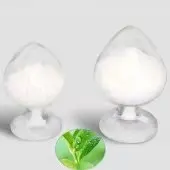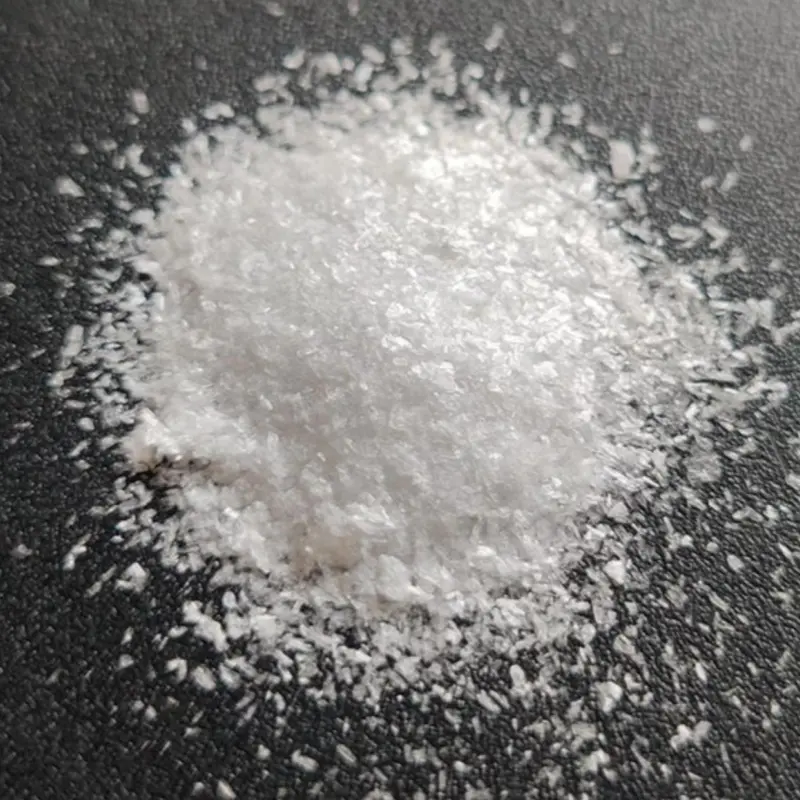+86-15212299029
- All
- Product Name
- Product Keyword
- Product Model
- Product Summary
- Product Description
- Multi Field Search
Views: 220 Author: tcchems Publish Time: 2025-10-29 Origin: Site











Content Menu
● Understanding the Roles of Vitamin C
● Understanding the Roles of Alpha Arbutin
● Can Vitamin C and Alpha Arbutin Be Used Together?
● How to Layer Vitamin C and Alpha Arbutin
● Practical Tips for Different Skin Types
● Common Pitfalls and How to Avoid Them
● Routine Examples for Different Goals
● Safety and Skin Health Considerations
In recent skincare routines, vitamin C and alpha arbutin have become two of the most popular brightening and antioxidant ingredients. Many people wonder how to combine them effectively and safely to maximize results while minimizing potential irritation. This article provides a comprehensive guide on using vitamin C and alpha arbutin together, including evidence-based best practices, practical layering tips, and common pitfalls to avoid. By the end, you will have a clear plan to incorporate these two powerful actives into a cohesive regimen that suits your skin type and goals.

Vitamin C, scientifically known as ascorbic acid, is a potent antioxidant that helps neutralize free radicals caused by sun exposure and environmental stress. It supports collagen production, aids in brightening dull skin, and can help fade hyperpigmentation over time. When used consistently, vitamin C can improve skin radiance, even out skin tone, and bolster skin protection against photoaging.
Key points to know about vitamin C:
- It exists in several stable forms, with L-ascorbic acid being the most studied and often the most effective at low pH.
- The brightening effect is gradual and usually noticeable after several weeks of regular use.
- Stability and potency depend on formulation, packaging, and storage conditions. UV and air exposure can degrade vitamin C, so airtight, opaque packaging is preferable.
Alpha arbutin is a glycosylated hydroquinone derived from bearberry extract. It works by inhibiting tyrosinase, the enzyme responsible for melanin production, which helps reduce the formation of dark spots and uneven pigmentation. Alpha arbutin is generally gentler on the skin compared to hydroquinone and is suitable for gradual lightening with a lower risk of irritation when used correctly.
Key points to know about alpha arbutin:
- It is compatible with a wide range of skin types, including sensitive skin, when used at appropriate concentrations.
- It targets hyperpigmentation while supporting an even complexion without drastic changes overnight.
- It can be gradually combined with other actives for enhanced results, provided proper layering and concentration guidelines are followed.
Yes, vitamin C and alpha arbutin can be used together in a skincare routine to synergize brightening and antioxidant effects. When combined thoughtfully, they can help brighten the complexion, reduce the appearance of dark spots, and protect skin from environmental stressors. The key is to choose stable formulations, apply them correctly, and monitor your skin's response to avoid irritation.
Important considerations when combining these actives:
- Concentration: Start with lower concentrations to gauge tolerance. Common starting ranges are vitamin C at about 10–15% and alpha arbutin at about 1–2%. Adjust based on skin response.
- pH compatibility: Vitamin C typically works best at a low pH around 3.0–3.5. Alpha arbutin is generally stable across a broader pH range. If using a vitamin C serum, apply it in a way that maintains its efficacy without compromising the activity of alpha arbutin.
- Formulation stability: Use products from reputable brands that clearly state the actives' concentrations and stability notes. Avoid stacking multiple unstable forms of vitamin C in a single routine.
Proper layering is essential to maximize benefits and minimize irritation. Here is a practical approach that many dermatologists and skincare researchers recommend.
- Morning routine
- Cleanse and pat dry.
- Apply vitamin C serum first to deliver antioxidant protection and brighten the skin. Allow it to absorb fully.
- Apply alpha arbutin serum or moisturizer afterward to support pigment reduction and even tone.
- Follow with sunscreen SPF 30 or higher to protect against UV-induced pigment changes and to preserve results.
- Evening routine
- Cleanse and pat dry.
- If you use a retinoid or other active, consider applying alpha arbutin at night as part of a more conservative approach to avoid irritation. If your skin tolerates, you can alternate or combine based on tolerance.
- If using a separate alpha arbutin product, apply it after cleansing and before moisturizer.
- Finish with a hydrating moisturizer to support barrier function.
- Alternate-day approach
- If your skin shows sensitivity, alternate vitamin C and alpha arbutin on different days or times of day. For example, vitamin C in the morning and alpha arbutin in the evening or on alternate days.
- Pairing with moisturizers
- If you prefer a combination product, select formulations that clearly state compatibility and stable layering instructions. If you combine separate products, ensure the total routine does not overwhelm the skin's barrier.
- Sensitive skin
- Start with lower concentrations and gradually increase as tolerated.
- Consider using a vitamin C derivative (such as magnesium ascorbyl phosphate or tetrahexyldecyl ascorbate) in place of pure L-ascorbic acid to reduce potential irritation, especially if you have a sensitive or reactive complexion.
- Patch-testing new products is essential when introducing both actives.
- Oily or acne-prone skin
- Vitamin C can help with post-inflammatory hyperpigmentation and overall brightness, while alpha arbutin can assist with pigment reduction in post-acne marks.
- Opt for lightweight serums and non-comedogenic formulations to avoid clogging pores.
- Dry or mature skin
- Beta-hydroxy acids or gentle exfoliants can be added if tolerated, but always prioritize hydration and barrier support.
- Use nourishing moisturizers and consider layering a hydrating toner or serum before actives.
- Over-exfoliation or irritation: Introducing two active brightening ingredients at once can irritate sensitive skin. Build slowly, and monitor for redness, burning, or irritation.
- Inconsistent use: Results require consistency. Skipping days can slow progress and prolong the timeline for visible changes.
- Not protecting skin from the sun: UV exposure can worsen hyperpigmentation and counteract brightening efforts. Always apply sunscreen in the morning.
- Mismatched concentrations: Using high concentrations without tolerance can lead to irritation. Start low and adjust gradually.
- Using expired or improperly stored products: Vitamin C is particularly unstable when exposed to air and light. Store products in opaque, airtight containers away from direct sunlight.
- Brightening and even skin tone
- Vitamin C serum in the morning
- Alpha arbutin product after vitamin C
- Broad-spectrum sunscreen
- Hydrating moisturizer
- Targeted hyperpigmentation reduction
- Vitamin C serum in the morning
- Alpha arbutin serum on targeted areas in the evening (or morning if tolerated)
- Gentle exfoliation 1–2 times per week (optional)
- Sunscreen every day
- Gentle maintenance with sensitive skin
- Patch-test first
- Alternate days for vitamin C and alpha arbutin
- Use derivatives or lower concentrations
- Moisturize and protect with sunscreen

- Can I use vitamin C and alpha arbutin together every day?
Yes, many people use them daily when their skin tolerates it well. Start with a low frequency and gradually increase as tolerated.
- Should I avoid using retinoids when using these actives?
You don't have to avoid them entirely, but you may want to alternate evenings or start with a lower frequency to reduce irritation. If you use retinoids, monitor your skin's response and adjust accordingly.
- Which form of vitamin C is best for pairing with alpha arbutin?
L-ascorbic acid is commonly used for strong brightening effects, but derivatives like magnesium ascorbyl phosphate or tetrahexyldecyl ascorbate can be gentler on sensitive skin while still providing antioxidant benefits.
- How long does it take to see results?
Typically, you may notice brightening and more even tone within 4–12 weeks with consistent use, though individual results vary based on skin type and product formulations.
- Can alpha arbutin replace hydroquinone for pigmentation concerns?
Alpha arbutin is a milder alternative that can help with hyperpigmentation and melanin synthesis, but results may take longer compared to prescription options. Always consult with a dermatologist for persistent or severe pigmentation concerns.
- Is there a risk of staining or patchy results when combining these actives?
When used correctly at appropriate concentrations and with sun protection, the risk is minimal. Always monitor for irritation and discontinue use if you notice adverse reactions.
- Are there any ingredients I should avoid pairing with vitamin C and alpha arbutin?
Some individuals may experience sensitivity when combining multiple potent actives like strong exfoliants or certain essential oils. If in doubt, introduce new ingredients gradually and consult with a skincare professional.
- How should I store my vitamin C products to maximize stability?
Store in a cool, dark place in airtight, opaque packaging. Some vitamin C formulas use stabilized derivatives to improve stability in less-than-ideal conditions.
- Can men use vitamin C and alpha arbutin together?
Yes, these ingredients are suitable for all adults who are aiming for brighter, more even skin tone, provided tolerance is established.
- Do these ingredients interact with sunscreen?
Sunscreen should always be used in the morning. Vitamin C and alpha arbutin work best when combined with sun protection to prevent new hyperpigmentation and to preserve improvements.
- Patch-test new combinations on a small skin area for 24 to 48 hours before full-face use.
- If you experience persistent redness, itching, burning, or irritation, reduce frequency or discontinue use and consult a dermatologist.
- Seek professional advice if you have a history of pigmentary disorders, eczema, or other chronic skin conditions.
Integrating vitamin C and alpha arbutin into a daily routine can effectively brighten the complexion and reduce hyperpigmentation when approached thoughtfully. Begin with conservative concentrations, prioritize stable, reputable products, and protect your skin with daily sunscreen. Layer morning vitamin C first, followed by alpha arbutin, then sunscreen. In the evening, consider alternating or pairing with other compatible actives while ensuring adequate hydration and barrier support. Monitor your skin's response over several weeks and adjust as needed.
Hot Tags: China, Global, OEM, private label, manufacturers, factory, suppliers, manufacturing company



